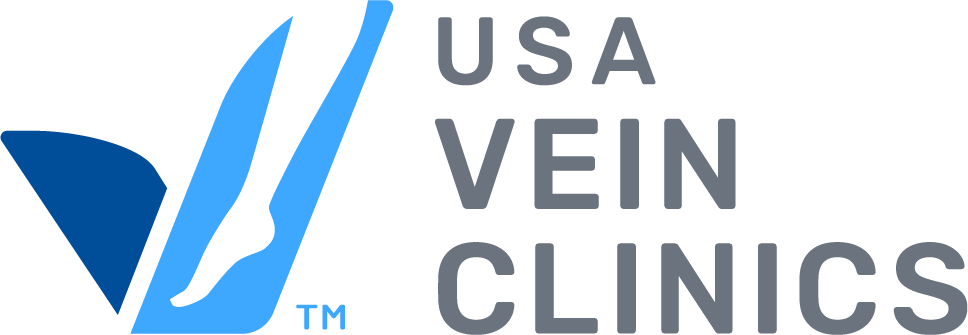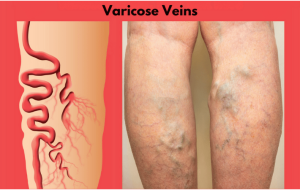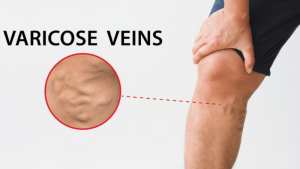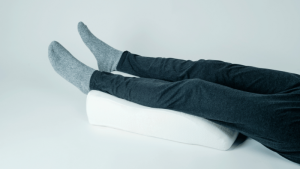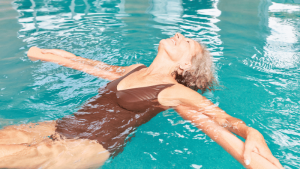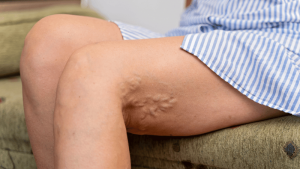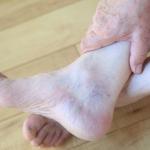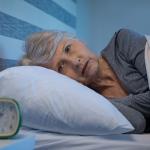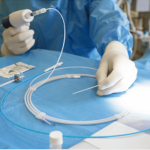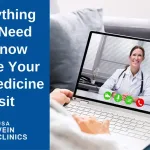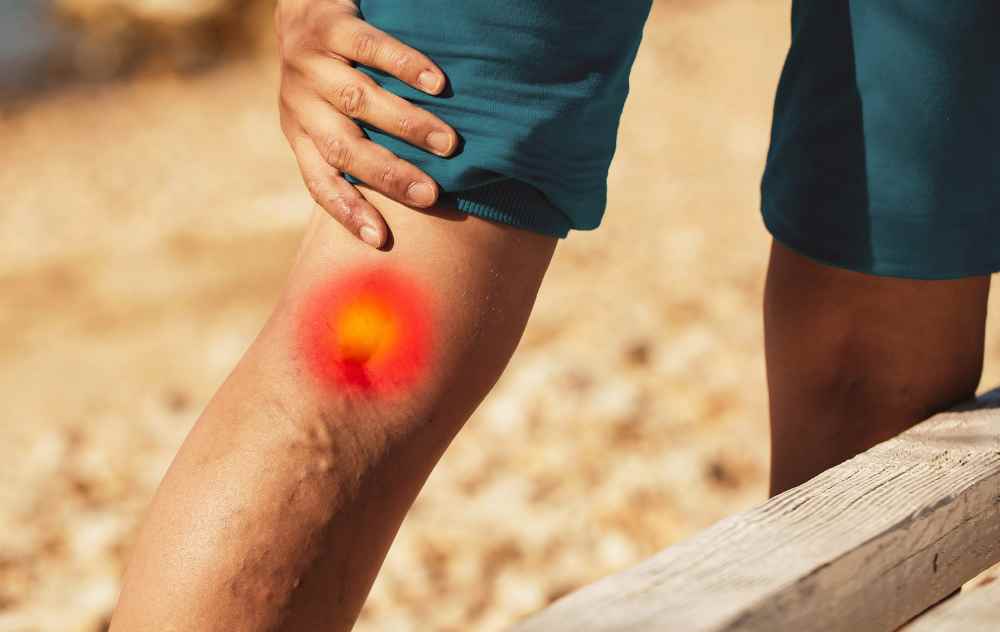
If you have varicose veins, your legs might also hurt, especially after sitting or standing for long periods. This pain can be incessant, and without treatment, it can also worsen, leading to serious leg pain that can interfere with your everyday life.
So what can you do to feel better?
A vein specialist can help you treat the underlying cause of your symptoms and provide long-lasting relief from varicose vein pain. In the meantime, there are plenty of ways you can alleviate the aching and heaviness in your legs to experience temporary relief.
Why Do Varicose Veins Hurt?
Varicose veins are leg veins that appear raised above the skin, enlarged, or twisted. They usually appear blue, blue-green or purplish-blue in color.
They are caused by vein disease or chronic venous insufficiency, a condition characterized by damaged vein valves.
If the delicate valves in leg veins become weakened or damaged, they may lose their ability to pump blood effectively upward. As a result, blood pools in the veins of the lower extremities.
This fluid build-up puts extra pressure on blood vessel walls, stretching the veins and making them less elastic. The stretched-out veins cause a heavy and achy feeling in the legs, which is associated with varicose veins.
The enlarged varicose veins can also cause inflammation in the surrounding tissue, exacerbating vein pain in the legs even more.
Managing vein health is important for overall well-being. Take our short quiz to see if you’re at risk and if it’s time to seek medical care.
TAKE OUR QUIZ TO EVALUATE YOUR VEIN HEALTH
How to Relieve Varicose Vein Pain
There are two ways to relieve varicose vein pain: long-term and short-term.
Treating vein damage can provide long-term relief. Vein treatments target damaged veins, improve blood circulation, and help alleviate the pain, swelling, and inflammation caused by vein disease.
Taking steps to improve your vein health with lifestyle changes can also promote long-lasting relief from painful varicose veins symptoms. Lifestyle changes include eating a healthy diet, exercising regularly, and managing factors that can damage leg veins, such as smoking, diabetes, and being overweight.
Here are a few tips to follow for both long and short-term varicose vein relief:
Short-Term Varicose Vein Relief
Short-term relief comes from improving circulation in the legs. You can ease varicose vein leg pain today with simple, at-home tips that you can practice safely on your own.
1. Elevate Your Legs
Elevating your legs allows blood to flow more easily toward your heart instead of pooling in your legs, ankles, and feet.
2. Avoid Sitting or Standing for Too Long
Avoid the stiffness and pain from being sedentary by walking around or stretching for five to ten minutes every hour.
3. Wear Loose Clothing and Comfortable Shoes
Wear comfortable shoes with foot/sole and ankle support, particularly if you will be on your feet for long periods. Avoid high heels, tight leggings, jeans, and other limiting or confining clothing, and opt for loose-fitting options, such as linen pants and sweatpants.
4. Ease Your Legs With Hydrotherapy
Hydrotherapy is the use of water for pain relief and treatment. Soak in warm water or use cool water to ease swelling and discomfort in your legs.
5. Drink Fluids
Not drinking enough fluids can impair blood flow and increase inflammation in blood vessels.¹ On the other hand, getting enough water promotes better blood circulation, which can, in turn, alleviate painful varicose vein symptoms.
6. Wear Compression Stockings
Doctors may recommend compression stockings for varicose vein pain relief. These can provide immediate support and relief, especially when properly fitted.
Long-Term Varicose Vein Relief
Long-term relief from varicose veins requires more comprehensive approaches. Consider lifestyle changes to manage and reduce symptoms effectively over time.
1. Practice Leg Stretches
Stretching is a great way to get your blood flowing and keep your legs healthy. Try stretching in the morning to ease any stiffness and before bed to help relieve pain and discomfort.
2. Stay Active When Traveling
You can get relief when traveling by stopping to walk around during road trips. If you’re flying, walk up and down the aisle when possible and massage your feet, ankles, and legs to help move blood from your legs up to the heart.
You can also prevent cramping by performing simple exercises such as:
- Clenching and relaxing your toes
- Flexing your feet and relaxing
3. Follow a Vein-Friendly Diet
Eating foods high in sodium can result in increased water retention and varicose vein pain. You should also get plenty of fiber in your diet with whole grains, nuts, seeds, legumes, and fruits and veggies.
4. Consult With a Vein Specialist
The most effective way to relieve varicose vein pain is through treatment.
If you have varicose vein pain, consult a vein doctor near you. They can evaluate your veins, diagnose underlying vein conditions, and recommend the best treatment to help alleviate painful varicose veins.
At USA Vein Clinics, our vein specialists offer multiple minimally invasive treatments for varicose veins. Our FDA-approved techniques take around 30 minutes and offer a quick recovery. Most patients can immediately return to normal activities.
Our vein specialists will choose the appropriate non-surgical, minimally invasive treatment option for each patient’s condition, but all of our treatments use a similar approach. Each of our treatments are performed as an outpatient, office-based procedure, ensuring minimal to no recovery time.
Varicose and spider vein treatments we offer:
- Endovenous Laser Therapy (EVLT)
- ClariVein®
- Varithena Vein Treatment
- Ultrasound-Guided Sclerotherapy
- VenaSeal™ Treatment
- Radiofrequency Ablation (RFA)
In each case, damaged veins are identified and mapped before being targeted for vein closure. Once closed, these veins are gradually reabsorbed by the body, allowing healthy veins to take over and improve blood circulation.
When to See a Vein Doctor About Leg Pain
If you are experiencing pain and discomfort with raised, bulging varicose veins, it’s recommended that you see a vein doctor for an evaluation. If you’re at a higher risk for vein disease and varicose veins, you can also schedule regular health check-ups to maintain good vein health.
Discover Effective Varicose Vein Pain Relief at USA Vein Clinics
USA Vein Clinics has over 160 non-surgical vein treatment centers across the country, making high-quality vein treatments more accessible. Our services are typically covered by most major health insurance plans, including Medicare and Medicaid.
There’s no need to suffer from varicose vein pain any longer. If you’d like to learn more about how our treatments can provide varicose vein leg pain relief, please contact us. You can call (888) 768-3467 or schedule an appointment online.
Frequently Asked Questions
What does it mean when varicose veins hurt?
If your varicose veins hurt, it means your veins are stretched or inflamed, or that fluid build-up caused by damaged leg veins is causing swelling and inflammation.
What does varicose vein pain feel like?
Varicose vein pain is a deep, throbbing pain that feels better when you elevate your legs. You might also notice leg heaviness, calf cramps, and an overall sense of achiness in your legs and feet.
What is the best way to relieve varicose vein pain?
Treatment to target damaged veins is the most effective way to relieve painful varicose vein symptoms. Treatment addresses the root cause and can ease pain, swelling, and other uncomfortable symptoms while also reducing the appearance of leg veins.
STILL HAVE QUESTIONS? CALL US TODAY TO MAKE AN APPOINTMENT
References
- Joseph C Watso and William B Farquhar, “Hydration status and cardiovascular function,” Nutrients 11 no. 8 (2019): 1866.
